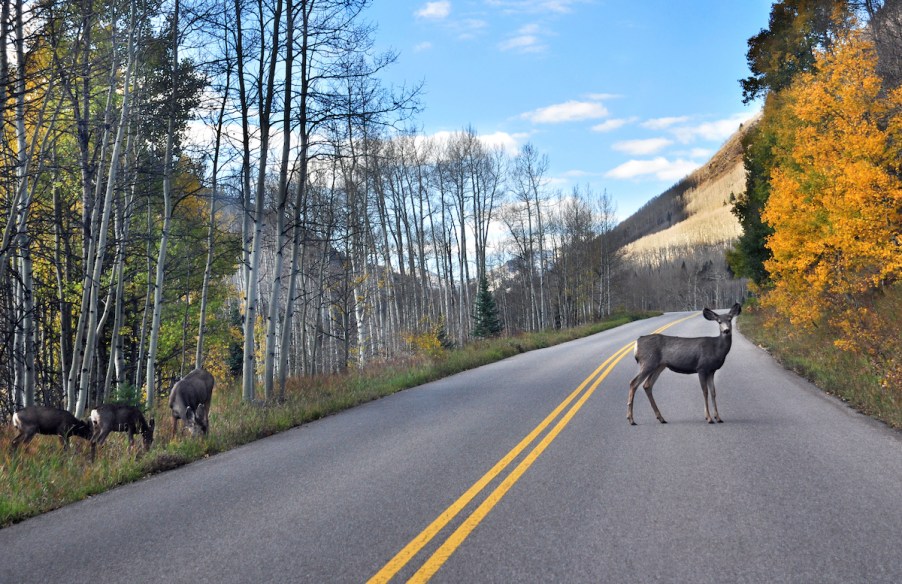
Is It True That Deer Are More Active During the Fall?
As a motorist, you’re always on the lookout for hazards and obstacles that could result in a car accident. From pedestrians to other motorists, there are plenty of reasons to stay alert behind the wheel. But another danger involves wildlife, especially deer.
Regardless of where you’re driving, deer can show up in the middle of the road without warning. And there really are certain times of the year when deer are more active. As fall approaches, you might wonder if there’s any truth to the idea that deer are more active during certain seasons.
Deer can be extremely dangerous to motorists

You don’t have to drive in a remote area to experience deer on the road. In fact, there are countless news stories about deer making their way into populated neighborhoods and across busy thoroughfares. That means there’s always a risk of running into a frightened doe or buck crossing the road without warning.
Deer are herd animals, meaning they often travel in small groups. And as a flight animal, sudden noises, lights, or disturbances will cause them to run. That behavior presents more dangerous driving conditions for motorists because these animals don’t know to look for cars before darting out into the road. According to Erie Insurance, more than 1.5 million people are involved in deer-related collisions every year.
Deer are more active during the fall months
Scientific and wildlife habit-related evidence supports the notion that deer are more active during the fall. The News & Observer reports that when deer hunting season and mating seasons overlap, it can be more dangerous for drivers.
These conditions push deer to explore beyond their usual territories. According to some data, almost half of all deer-related collisions occur between October and December for those reasons.
Additional to these peak running seasons for deer, there are certain times of the day when deer are more prevalent, too. The animals are more active at dusk and dawn, when they tend to forage for food.
So if you’re driving in the fall at those times of day, be extra-vigilant behind the wheel. Also, wherever you see a deer crossing sign, officials designated those areas for a reason. Areas with higher deer populations will have these signs visible to motorists as an indication that the creatures cross those sections of the road more frequently.
Does car insurance cover deer-related accidents?
Heading into the busy deer-running season, it might be a good idea to call your car insurance provider to verify your coverage. State Farm reminds its policyholders that only comprehensive coverage helps pay for damages to your vehicle if a deer hits it. Collision insurance or liability-only coverage will not cover accidents involving animals. Most insurers will maintain the same requirements for coverage.
If your car collides with a deer, follow these steps:
- Pull over, preferably to a safe place, and activate your car’s hazard lights.
- Call 911 to report the incident and file an official report, which will be helpful if you file an insurance claim.
- Document the accident by taking photos of injuries or vehicle damage.
- Stay away from the deer and vehicular traffic until help or the authorities arrive.
This fall, remain alert for deer on the road. They’re more active in the fall, so be prepared for last-minute crossing attempts.


